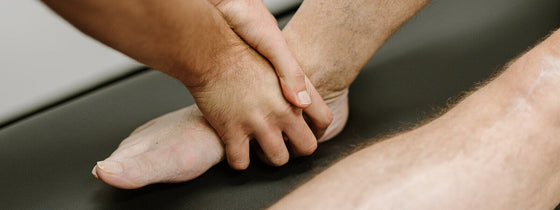The new year is starting and kids are stepping into the new year at full force! With new classes, new schools, and new activities, all kids need to be ready to perform at their best, starting with the right footwear.
Shoes are a vital part of anyone's day-to-day life, but children especially need to have supportive and comfortable shoes, to ensure they can make the most of their time at school, with no aches or pains and maximum comfort. Kids’ feet continue to develop and change throughout their whole lifespan, where changes in bone, growth, and foot posture continue to change as we age. Good shoes can help with foot pain, knee and hip pain, childhood/adolescent development, and aid in allowing kids to grow comfortably without pain.
So, what do your kids need to consider about their shoes when heading back to school in 2023?
1. Ensure the shoes fit properly.
Seek out a trained shoe fitter, podiatrist, or another health professional to ensure that you are choosing the right shoes for your child. Take the time to ask yourself: 'Do they have orthotics?', 'Are they growing?', 'What is their foot type?', 'Are they active?'. All of these considerations impact on the type of shoe required for the child. It is also important to ensure that the shoes you buy aren't too big or small, so having a proper fitting is essential.
2. Are leather school shoes sufficient to wear all day?
The short answer to this is no. Although leather shoes are more expensive, it is also important that children have a good pair of runners that are well-fitted for exercise-based school activities, such as PE, sports, and running. Leather school shoes unfortunately are not made for these activities, so having a spare pair of shoes to change into throughout the day will help kids to perform at their best!
3. Why is it important to buy good school shoes?
On average, kids spend approximately 12,000 hours in their school shoes. This emphasises the importance of having appropriate school shoes that are supportive, not worn out, and provide reinforcement to the feet.
4. How do I know that this is a well-fitting and appropriate shoe choice for my child?
Here are some key things to look out for:
While this may seem like a lot of information to take in, do not fear! Having guidance from a foot expert can help to make this experience a smooth sailing one for you and your children.
If you need any further advice, contact us for an appointment with our Podiatrist Melanie to have your child's feet checked, or speak to one of our physiotherapists if you have any questions or concerns.

If you're experiencing back or neck pain with neurological signs and symptoms, a thorough neurological examination is crucial for accurate assessment and effective treatment. In this Optimal Tip learn more about what we mean by completing a neurological exam!

Squats, deadlifts, and calf raises are key movement patterns that should be part of every strength and conditioning program—regardless of age and activity level. These functional movements support joint health, improve posture and balance, and reduce the risk of injury while building strength where it matters most.

A ganglion cyst is a fluid-filled swelling that typically forms over a joint or tendon sheath, causing discomfort and pain, especially when pressing against nerves or joints. Proper assessment and treatment, including physiotherapy, are essential for managing symptoms and improving function in the presence of a ganglion in your hand, foot, or wrist.